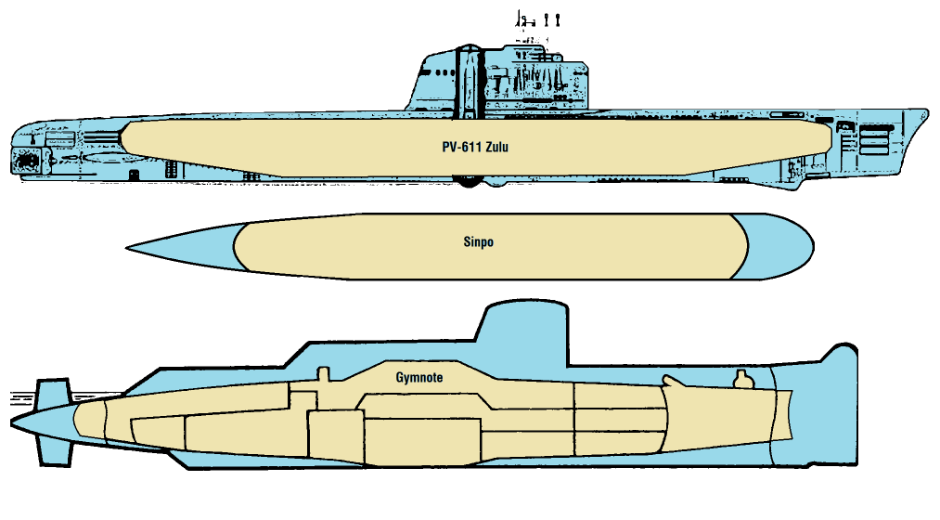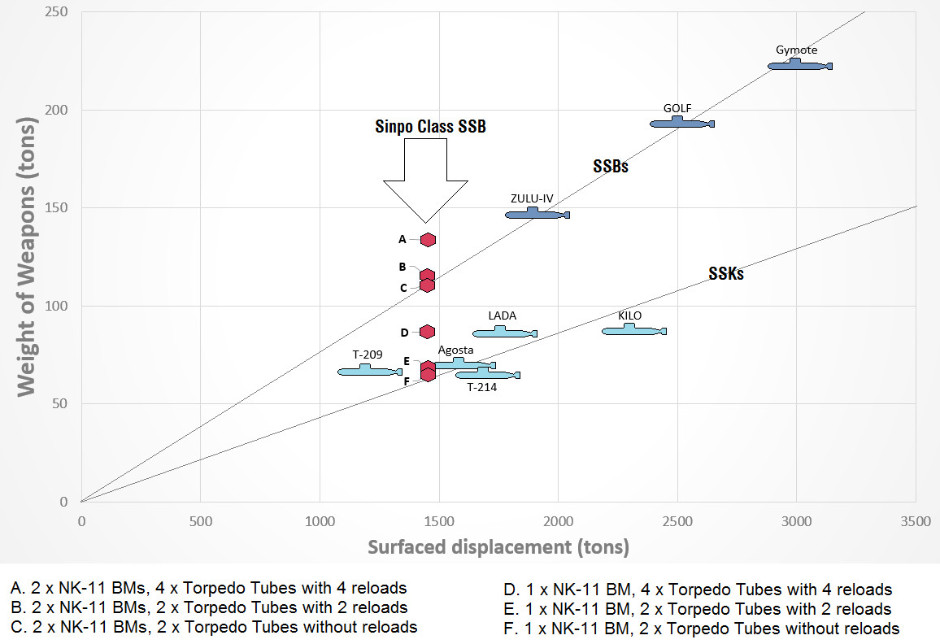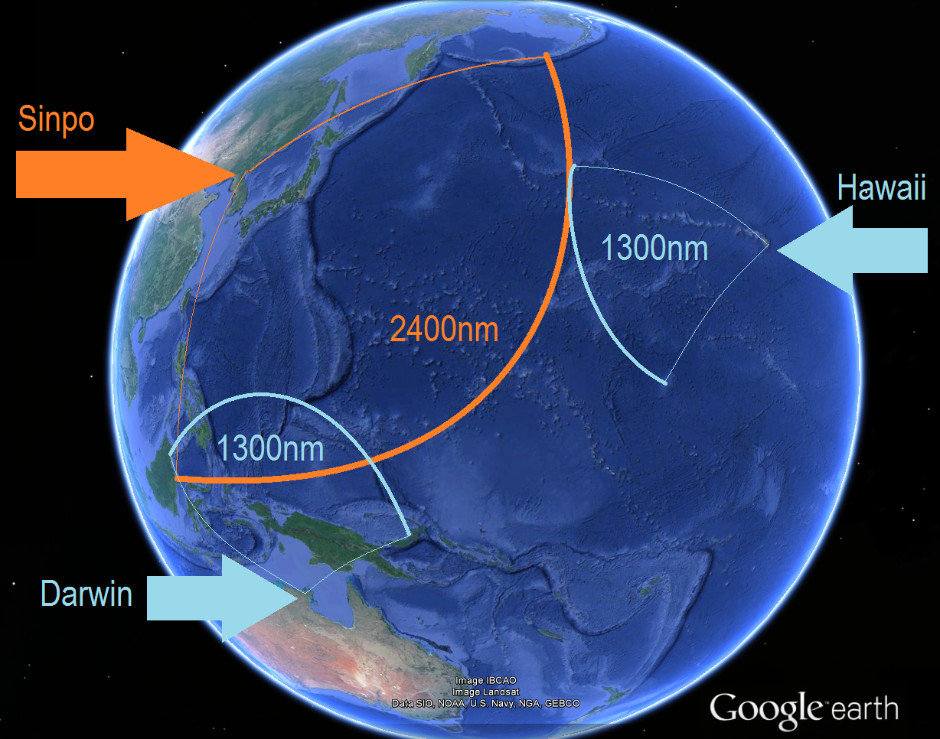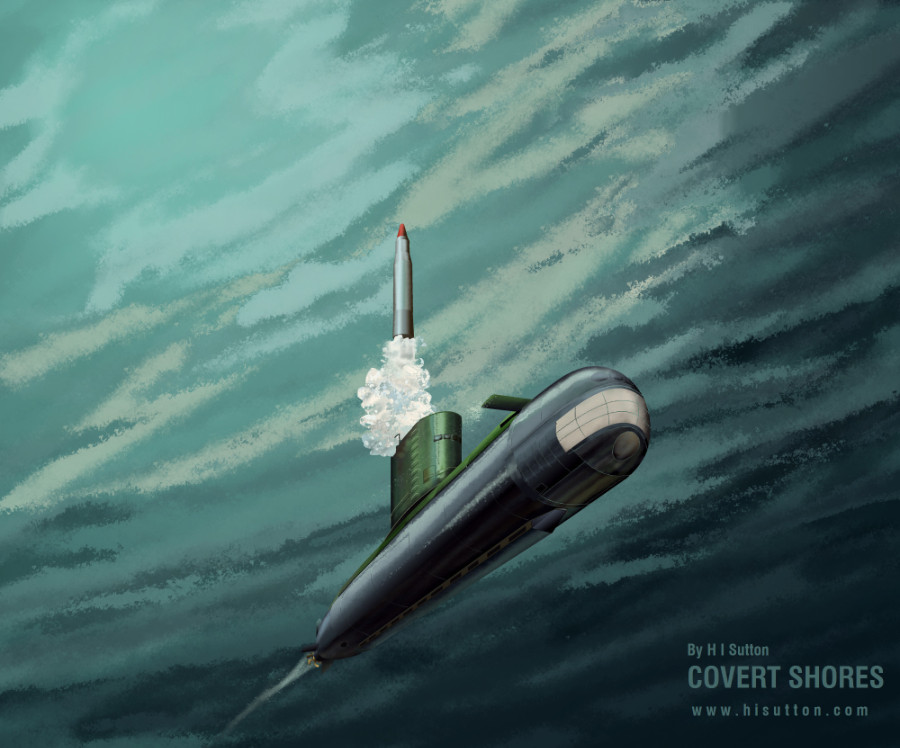Thank you to unnamed advisers. This work would not have been possible without substantial inputs from experts. Any errors or incorrect assumptions are purely the responsibility of the author however
 Intelligence staff will be analysing every aspect of the new submarine building up a detailed understanding of the boat and its capabilities. One of the analysis that they will be conducting is calculating the weight of the submarine's armament as a portion of Normal Surface condition (displacement, NSC). This can tell you a lot about its capabilities. In general, the more weight taken up with armament the less is available for other components such as batteries, propulsion and crew. Therefore if we understand the armament weight, we can estimate the submarine's overall capability, such as range and endurance.
Intelligence staff will be analysing every aspect of the new submarine building up a detailed understanding of the boat and its capabilities. One of the analysis that they will be conducting is calculating the weight of the submarine's armament as a portion of Normal Surface condition (displacement, NSC). This can tell you a lot about its capabilities. In general, the more weight taken up with armament the less is available for other components such as batteries, propulsion and crew. Therefore if we understand the armament weight, we can estimate the submarine's overall capability, such as range and endurance.
Read earlier analysis >....
The starting point is estimating the boat's total surface displacement. Displacement is the weight of water that a submarine (or other vessel) displaces when it is floating. The best estimate of the experts I consulted was 1,455 tons surfaced. For sure the boat is much smaller than similar conventional-powered ballistic missile submarines such as the old Soviet ZULU Class and the French experimental boat Gymnote:

The displacement difference is far greater than might at first be apparent from the above image - we have to think in 3D. The Gymnote has a much larger hull diameter for instance. Additionally the other two types have much more substantial double-hull elements. Sinpo is small.
We can then estimate the weight of the NK-11 ballistic missile. This weapon is physically similar in virtually all respects to the Soviet R-27 type:
NK-11 SLBM
Total Mass: 14.200 kg per R-27
Diameter: 1.50 m per R-27
Total Length: 9.3 m per photo analysis
Payload: ~650 kg single nuclear warhead or equivalent conventional charge
Maximum range: 2400 km (1300 nautical miles) per R-27
Launch platform: Sinpo Class SSB
Therefore we can calculate the weight of armament, including the environmental system, control system, power connections, missile tubes and upper hatches as 47 tons. This is similar to the R-13 missile and heavier than the smaller diameter R-11 (SCUD) type but lighter than many solid-fueled ballistic missiles. Based on that plus various torpedo fit options we can calculate that the armament faction of the boat is between 4.5% with just two torpedoes to 8.7% with a regular load of 8 torpedoes in four tubes. Note that we assume that North Korean torpedo tubes will not use impulsors to eject the torpedoes (this would add substantial weight).

8.7% seems too high, whereas two torpedo tubes with no reloads would put the boat in line with other small SSBs. If only one NK-11 missile is carried then obviously there is room for a decent torpedo load. But with two ballistic missiles there is barely weight for anything more than a minimum torpedo load.
Capability / Threat
The Sinpo Class is a small boat. It seems that she is built to the requirement of being the smallest possible boat to carry a NK-11 “북극성-1” (Pukgeukseong-1) missile. This reinforces the view that she is only a test boat with limited operational capability at most. Battery and crew provisions would be sorely limited giving an endurance of less than a month. Speed would be quite slow, especially in an operational setting. Although we can expect the boat to remain local, acting as a mobile TEL with her ballistic missiles targeting Japan and South Korea, we should at least ask the question of whether this boat could, in extreme circumstance, threaten countries much further afield. Using a possible ten-day voyage to the launch site and a mean rate of advance of 10kts (which is optimistic and can be considered a parameter) we find that the Sinpo Class can Just about reach a launch position off Hawaii. It's a close call. Darwin in Australia is closer, and most f South East Asia is well within possibilities.

Learn EVERYTHING about Special Forces subsCovert Shores 2nd Edition. A world history of naval Special Forces, their missions and their specialist vehicles. SEALs, SBS, COMSUBIN, Sh-13, Spetsnaz, Kampfschwimmers, Commando Hubert, 4RR and many more.
Check it out on Amazon
Future threat
The Sinpo Class is very modest, but more capable boats may follow. The natural evolution is normally measured in the number of missiles but in North Korea's position range, endurance and stealth would be far greater threat factors. In order to make longer endurance submarines with more than four missiles North Korea would have to make a boat with a larger diameter hull. In engineering terms this might be the most challenging part. Sinpo may be tiny by ballistic missile submarine terms, but she is the largest North Korea has ever built.
Simpo Class SSB (Provisional)

Displacement: 1,455 tons (surfaced), 1,650 tons (submerged)
Length: 68m
Waterline length: 65m
Beam: 6.5m
Speed: <20kts
Range: TBC
Endurance: Approximately 1 month or less
Operating depth: TBC
Propulsion: Diesel-electric



